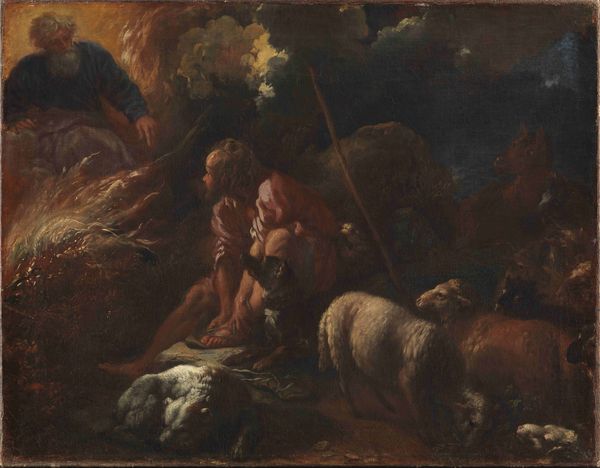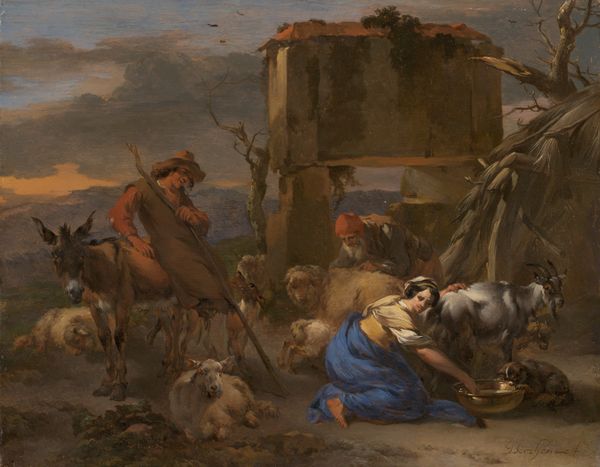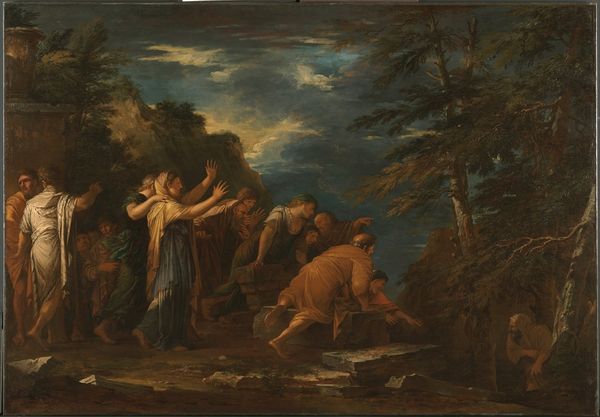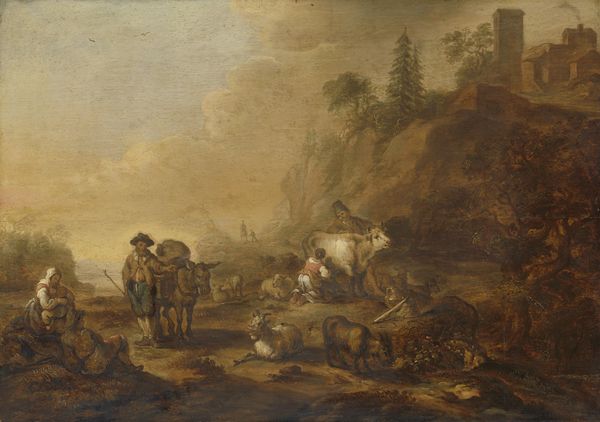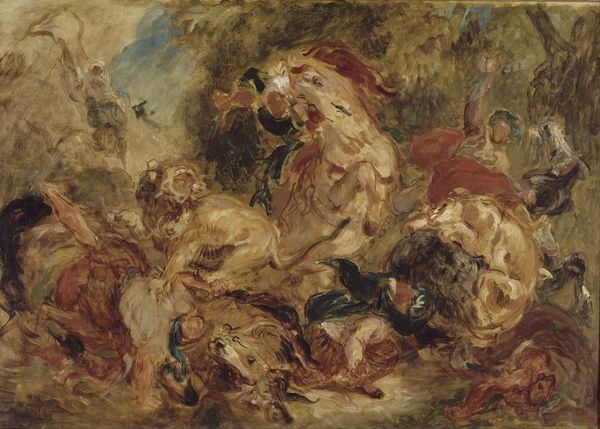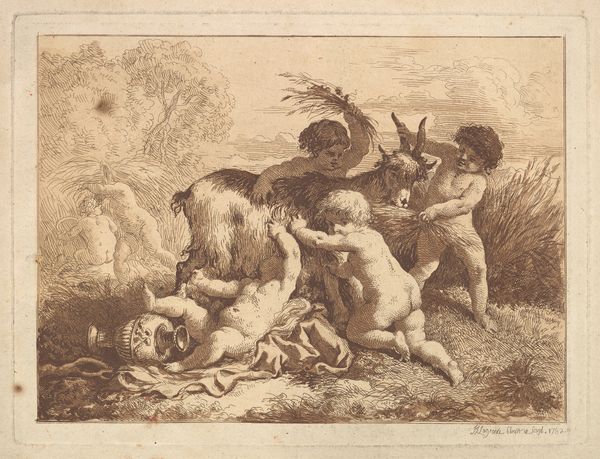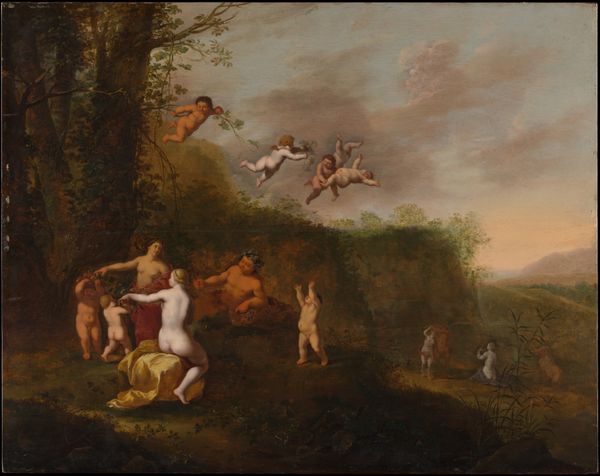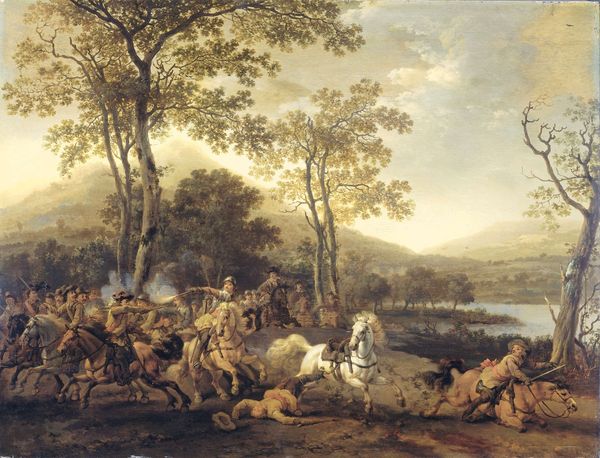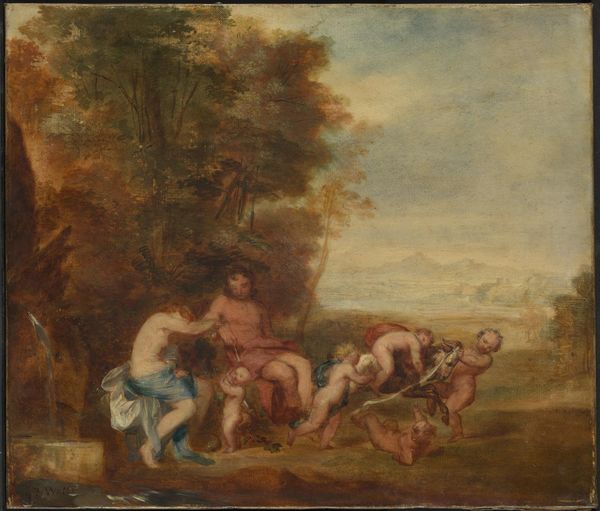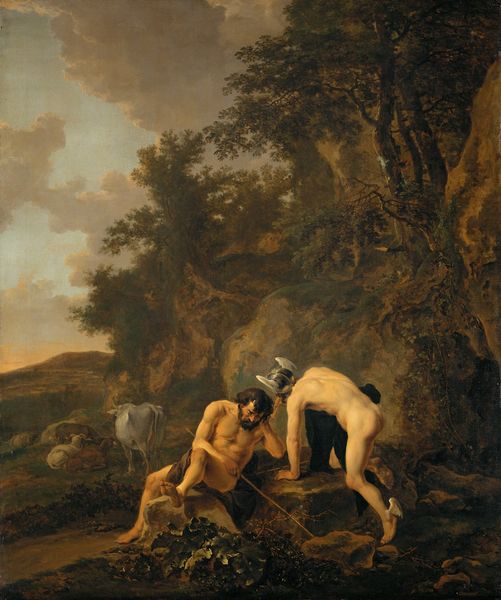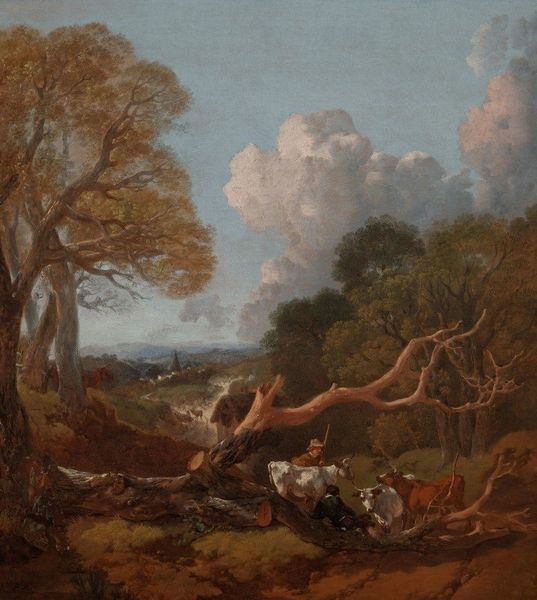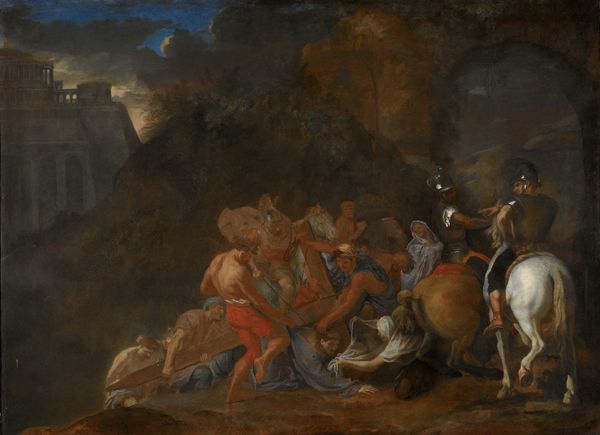
painting, oil-paint
#
narrative-art
#
baroque
#
painting
#
oil-paint
#
landscape
#
figuration
#
oil painting
#
mythology
Copyright: Public domain
Curator: This is Carel Fabritius’ “Mercury and Argus,” painted in 1647. The piece, executed in oil paint, brings a classical myth into the earthy realism so characteristic of the Baroque. Editor: My first impression? Weariness. The exhausted postures of the figures, the muted palette, and the overall lack of dramatic action speak volumes. It’s an interesting take on a story normally full of dynamism and deception. Curator: Absolutely. Observe how Fabritius uses chiaroscuro. The strong contrasts emphasize the solidity and bulk of the figures, almost sculptural in their presence, while simultaneously drawing our attention to the central narrative. We see Mercury's intent gaze fixed upon the drowsy Argus. Note the composition itself reinforces the quiet tension: the figures are placed asymmetrically, leaving a void to the right, drawing our eyes across the space to observe every minute interaction. Editor: I’m intrigued by what the positioning of Mercury as he gently strokes Argus's head conveys when considered with themes of power and exploitation. We witness the exploitation of trust. The gaze is key. While Mercury looks at Argus, seemingly comforting him, we know his real intention is murder most foul; this prefigures the end of the story—this act is performative, laden with deception. Curator: The semiotics are striking. The shepherd's crook functions as an index of Argus's pastoral role but takes on an almost mournful significance in this context, doesn't it? Also, look at the luminosity radiating from Argus's skin: rendered so painstakingly it suggests his innocence in this drama about to unfold, soon snuffed out by trickery. Editor: And the fact that Argus is a many-eyed watchman, tasked to guard Io—his power stems solely from service to the patriarchal order. His murder at the hands of Mercury becomes a violent disruption of that power structure. And is there, perhaps, a queer reading to be explored in Mercury’s gentle deception—a blurring of affection and intent? Curator: That's a persuasive point to consider. It encourages us to understand more fully how these artistic and mythological symbols intertwine, forming layers within layers that are so expertly handled here. Fabritius asks us to look closely not just at brushstroke but also how composition relates across art and literature together. Editor: Indeed, reflecting on Fabritius' choice forces a reflection on our own engagement with narratives of power and those caught within their grasp.
Comments
No comments
Be the first to comment and join the conversation on the ultimate creative platform.
